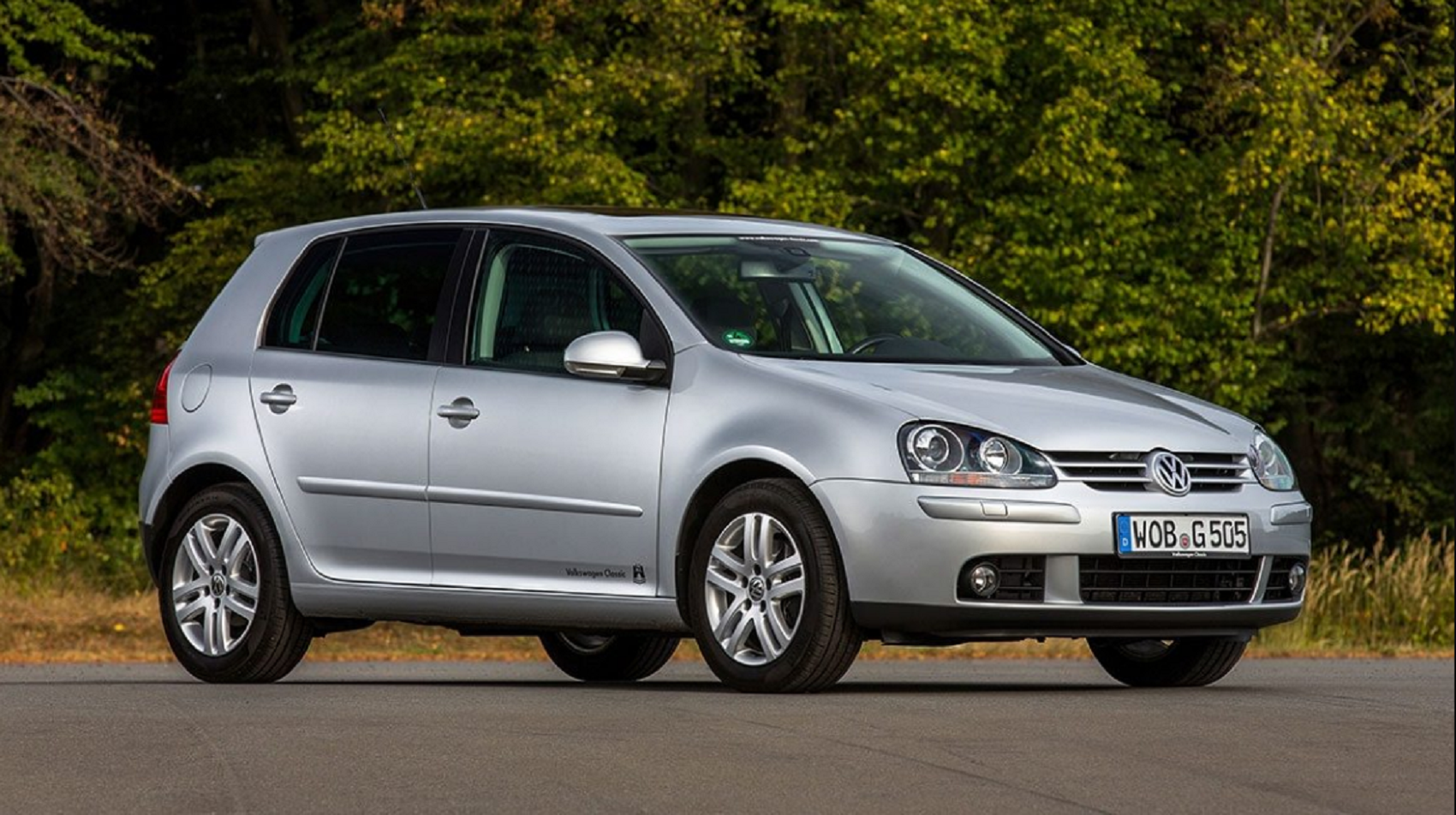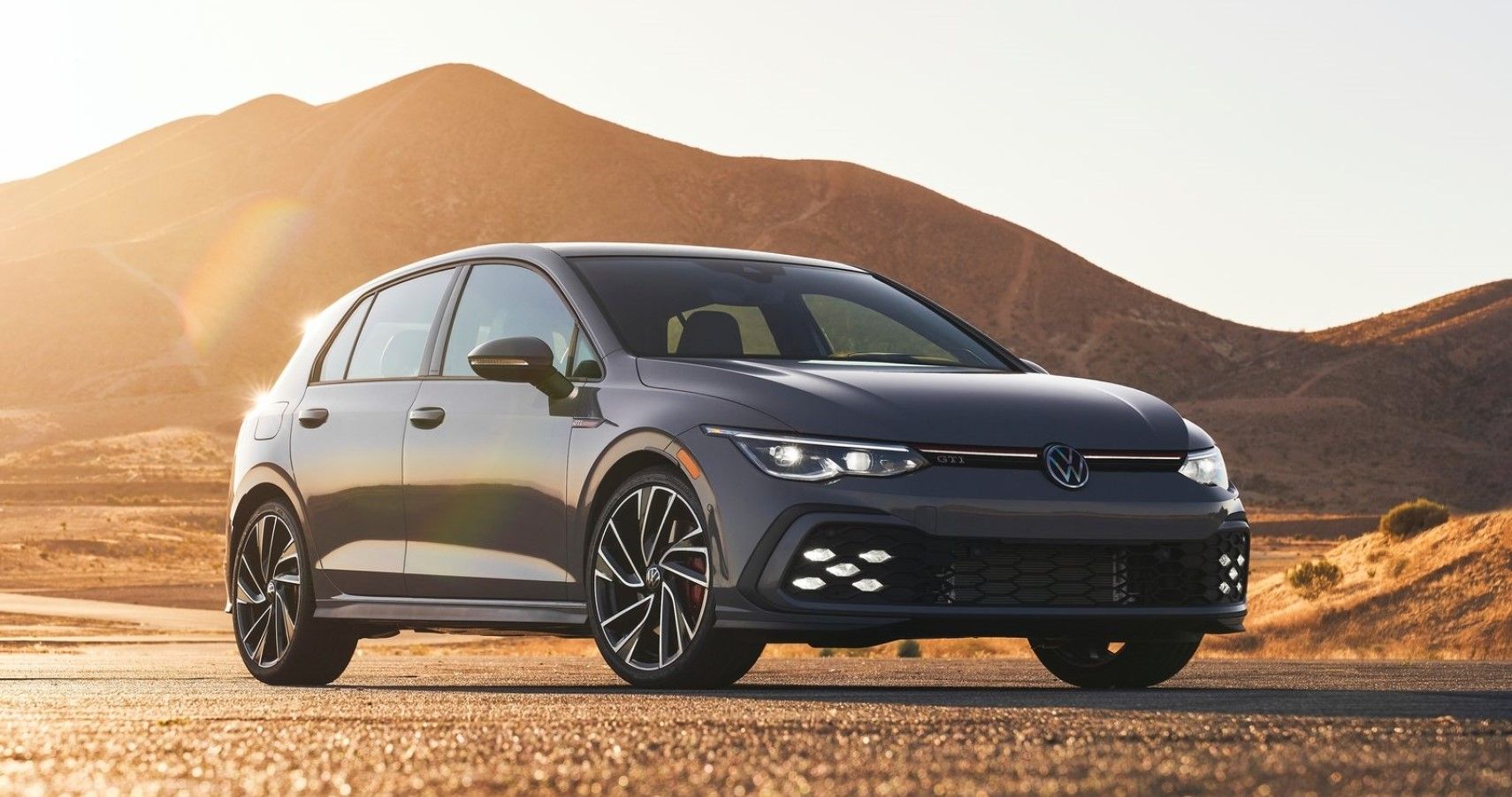Did you hear? The title of the fastest hatchback around the fabled Nürburgring circuit has gone to a new hot hatchback. The new Volkswagen Golf R “20 Years” has been making headlines for clocking the fastest lap time for an R model on the German racetrack Nürburgring Nordschleife. With an increase in power, the new anniversary edition has bettered the previous lap record of a Golf R on the 13.02-mile long racetrack.
The official lap time of the Golf R “20 Years” was 7:47.31 minutes, faster by four seconds than the previous record. The “Schwedenkreuz” and “Döttinger Höhe” track sections were a cakewalk for the Golf R “20 Years”, thanks to improved exclusive standard equipment, optimized driving dynamics, and a standard output of 333 PS.
This is indeed impressive of a car that’s barely big enough for Sunday grocery shopping. We’re celebrating this incredible lap time while we take a short history lesson on the origin of Golf. It has been 45 years since the VW Golf was introduced in 1974. Not too long after, it went on to become a compact car with popularity so profound, that the phrase ‘Golf Class’ was coined. Volkswagen has produced more than 35 million units of the Golf.
Origin Story Of Volkswagen Golf
The Volkswagen Golf came as a successor to the Volkswagen Beetle in March 1974, and it was a worthy successor indeed, crossing sales of 6.99 million units in its very first generation. Volkswagen Chief Designer Klaus Bischoff: “The step from the Beetle to the Golf was revolutionary. With the switch from the air-cooled rear engine to the water-cooled front engine, a completely new vehicle layout was created at the time.”
Round became angular – a paradigm shift. In its second generation, the Golf got bigger and also more aerodynamic. It brought with it a list of technological advancements that included ABS, and power steering, and it was also the first all-wheel-drive Golf.
Volkswagen also introduced a regulated catalytic converter for the first time in the 1.8-liter injection engine. This was five years before Germany rolled out a mandate on catalytic converters. In 1989, the first diesel engine with a catalytic converter followed in November – a world first. VW sold a total of 6.3 million second-generation units.
Modernization Of Volkswagen Golf
The third generation looked much different from the first two but instantly recognizable as a Golf. While the transition from the first to the second was about getting larger dimensions and more powerful engines, the third was about design. The car also stepped into a new era of safety with front airbags in 1992 and side airbags in 1996.
This was also when cruise control was introduced, along with a direct-injection diesel engine (TDI). The design of modern-day Golf had begun to take shape with the fourth generation. Not only did it look fresh, but VW also introduced a quality standard in the segment. At the same time, adding to safety continued with the debut of the Electronic Stability Control (ESC) in 1998.
On its 25th birthday, a special GTI model with 182.5 PS, the Golf GTI “Edition 25”. In 2002, one of the coolest Golfs, the Golf R32 came with a top speed of 156 mph. By 2003, 4.99 million units of the Golf IV had been produced, including all derivatives.
Volkswagen Golf Doesn’t Intend To Stop
The Golf was the best-selling car in Germany in 2003 for about three decades. The fifth generation had “sporty” written all over it. Plus, it had a laser-welded body, rear side airbags, four-link rear suspension, seven-speed DSG, rain sensors, and a panoramic sunroof. Over the lifetime of the fifth generation, 3.4 million units, including derivatives, were sold.
The laser-welded body helped the Golf in this generation score a perfect five-star rating in the Euro NCAP crash test. This was when VW introduced knee airbags and a variety of assistance features like Park Assist, Hill Start Assist, start/stop system, and LED tail lights, among others. The 2009 Golf was the most advanced Golf up until then. VW sold 2.85 million units of the sixth generation.
Volkswagen Golf VII: A Taste Of Electrification
The Golf was a modern machine in this generation and looked the part. It was lighter, fuel consumption was lower, had a new digital display, and even more assistance systems. The all-electric e-Golf2 in 2014 had a range of around 119 miles. Shortly afterwards, the Golf GTE3 with plug-in hybrid (PHEV) drive was launched.
Volkswagen Golf VIII: 2019-Present
The new Golf uses the latest version of the VW Group’s MQB platform and is indeed the sleekest Golf design yet. The eighth-gen Golf is also the first VW to feature Car2X technology that uses information from cars and infrastructure through sensors to produce data based on local traffic and conditions. It also gets Travel Assist, which uses a combination of adaptive cruise control and lane assist to enable ‘assisted driving’ at speeds of up to 131 mph. It is also the best Golf ever for driving enthusiasts.
Source: Volkswagen




